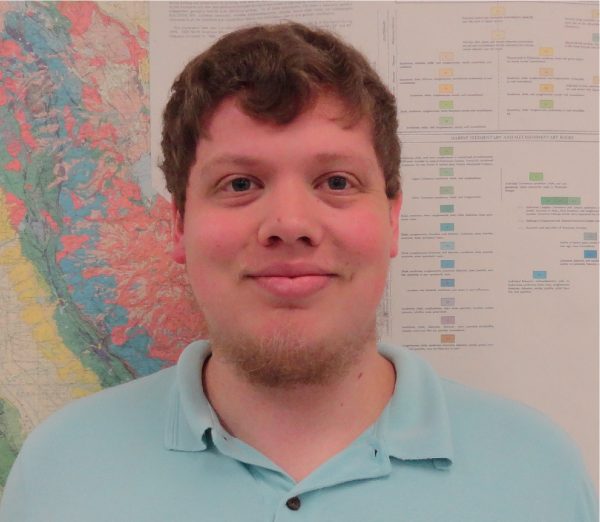
Building Out a Monitoring Well Database to Evaluate Future Groundwater Sustainability in the Southern Central Valley
Daniel Knorr
BS Candidate
Advisor – Dr. Matthew Weingarten
Friday, May 6, 2022 @ 11 am
CSL 422 or via zoom
Abstract
California’s Central Valley grows the bulk of California’s agriculture, which in turn provides roughly $40 billion in revenue to the state annually (CA Attorney General). A large portion of the water required to sustain this agricultural production comes from groundwater pumping. It is vital to ensure that water pumping in the area is sustainable in the long term. However, sustainability cannot be evaluated unless there is ample data collection, which is one of the main tenants of the Sustainable Groundwater Management Act (SGMA). The law segmented the state into different Groundwater Sustainability Agencies (GSAs) and tasked each with creating a local Groundwater Sustainability Plan (GSP). As part of these plans, the unconfined and confined Central Valley aquifers are to be monitored for continuous water level by a network of wells for the next 50 years. Each well is given a target water level (measurable objective) for sustainability, as well as a minimum water level (minimum threshold) below which undesirable results may occur. To form a complete data set, each well requires location, measurable objectives, minimum thresholds, well depth, and perforation intervals.
Previous efforts to gather complete SGMA well information left six GSAs in the southern Central Valley without complete data sets. This study focused on gathering better information from these six GSAs: Turlock, Merced, Kings County, Tule, Delta Mendota and Tulare Lake. A total of 461 wells were found in these six previously poorly-documented GSAs with partial data, but only 222 wells contained the key features of information which allow for future monitoring of sustainability. The completeness of information was not evenly distributed; Turlock GSA had the most complete dataset among the six GSAs covered. By contrast, Kings County GSA and Tulare Lake GSA contained large gaps in their SGMA data, and provided very little full well information. Kings County provided no coverage of the confined aquifer, while Tulare Lake provided no coverage of the southern half of the GSA. Merced GSA contained complete well data, but the monitoring locations were all clustered around urban areas. Tule GSA and Delta Mendota GSA provided mostly complete information, but with localized regions lacking monitoring wells. The new wells documented in this study will help inform future modeling of groundwater pumping and help determine whether or not Central Valley GSAs will meet their stated measurable objectives.

